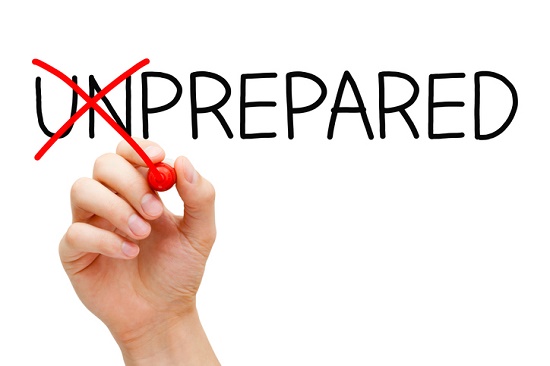
The news that you may need hearing aids can be a bit jarring at first, but after you get used to the idea, and the hearing aids themselves, you’ll wonder how you ever got along without them. Realize, though, that there are no “ready-to-wear” hearing aid models. They all require customization to your needs. Prepare for this process and work with a trained hearing care professional for the best results.
Use these steps to prepare for hearing aid success:
Before your appointment
At your hearing test, your hearing care professional will test your hearing, review the results, and help you decide if hearing aids are appropriate for you right now in your life. Before this appointment, make sure to put together a list of questions you want to address with your hearing care professional.
These are just some of the questions you’ll want to cover:
What type of hearing loss do I have? Is it mild, moderate, severe, or profound?
Can hearing aids help me, and do I need one for both ears?
What type of hearing aids would best fit my needs?
How do I balance my budget with the features I need or want?
What are my financing options for hearing aids? (Insurance, installments, credit, payment plans, state programs, etc.)
At your hearing test appointment
If your hearing tests come back negative for hearing loss, congratulations! You can save the results of this hearing test as a baseline for any future tests.
But if you do test positive for a level of hearing loss, there’s a chance you will benefit from hearing aids. Your hearing care professional will review your options with you.
In selecting a hearing aid, there are several variables to consider. Make sure you cover these areas:
Programmability – The majority of modern hearing aid models today are both digital and fully programmable. This means your hearing care professional should program them to meet your exact type of hearing loss. This is so essential; if anyone tries to sell you hearing aids “right out of the box” they probably will not give you the hearing improvement you desire.
Style – hearing aids come in several sizes and styles, from models that sit behind the ear to models that fit entirely within the ear canal. You’ll want to balance price, ease-of-use, functionality, and aesthetics in making your decision.
Wireless connectivity – most of today’s hearing aid models have the functionality of connecting wirelessly to compatible smartphones too. This gives you a lot of power: you can discreetly send phone calls directly to your hearing aids, adjust volume and settings and even stream your music collection without any wires remote controls.
Advanced features – Keep in mind also that many models are stocked with advanced features like background noise reduction, directional microphones for enhanced speech recognition, environmental settings and telecoils for crisper phone calls. You’ll need to balance your budget with your needs for any of these additional features.
This may all seem confusing, but your hearing care professional is trained to help guide you through the decision-making process. Of course, if someone tries to rush or steer you to a decision without addressing your questions, that should be a red flag.
At home
Once you’ve selected your hearing aids and had them programmed by your hearing care professional, you’re ready to bring them home. But you should keep two things in mind.
First, don’t expect to fall in love with your hearing aids immediately. You’re going to start hearing sounds you’d forgotten about in past years and it may be a little jarring at first. This is perfectly normal and, after a few weeks, you’ll adjust.
Just start small at home at first. Try just watching a favorite movie without a lot of sound effects; pay close attention to the dialog. Have a one-on-one conversations in a quiet room. Listen to a favorite song and pick out or follow certain instruments.
Your new hearing aids need to be broken in like a pair of shoes and won’t feel totally comfy at first. You must try to wear your hearing aids as much of the day as possible. Put them in when you wake up and don’t take them out before you go to bed. This will speed up the adjustment process, and after a few weeks, you’ll be glad you put in the effort.
If you still have difficulty hearing or adapting to the new sound, your hearing aids can and should be adjusted! So do not hesitate to schedule a follow-up visit with your hearing care professional to fine-tune the settings.
Second, to ensure continued performance, you’ll need to properly maintain and care for your new hearing aids. They’ll need daily cleaning, proper storage, and battery supply.
You can make these tasks easier on yourself with the right tools and habits. Hearing aid cleaning kits, storage cases/sanitizers, and batteries can all be supplied, with tips, from your hearing care professional.
After a short period of adjustment, you’ll be prepared to enjoy the all the benefits of better hearing. If you have any other questions about hearing aids, or the process of acquiring them, give us a call!